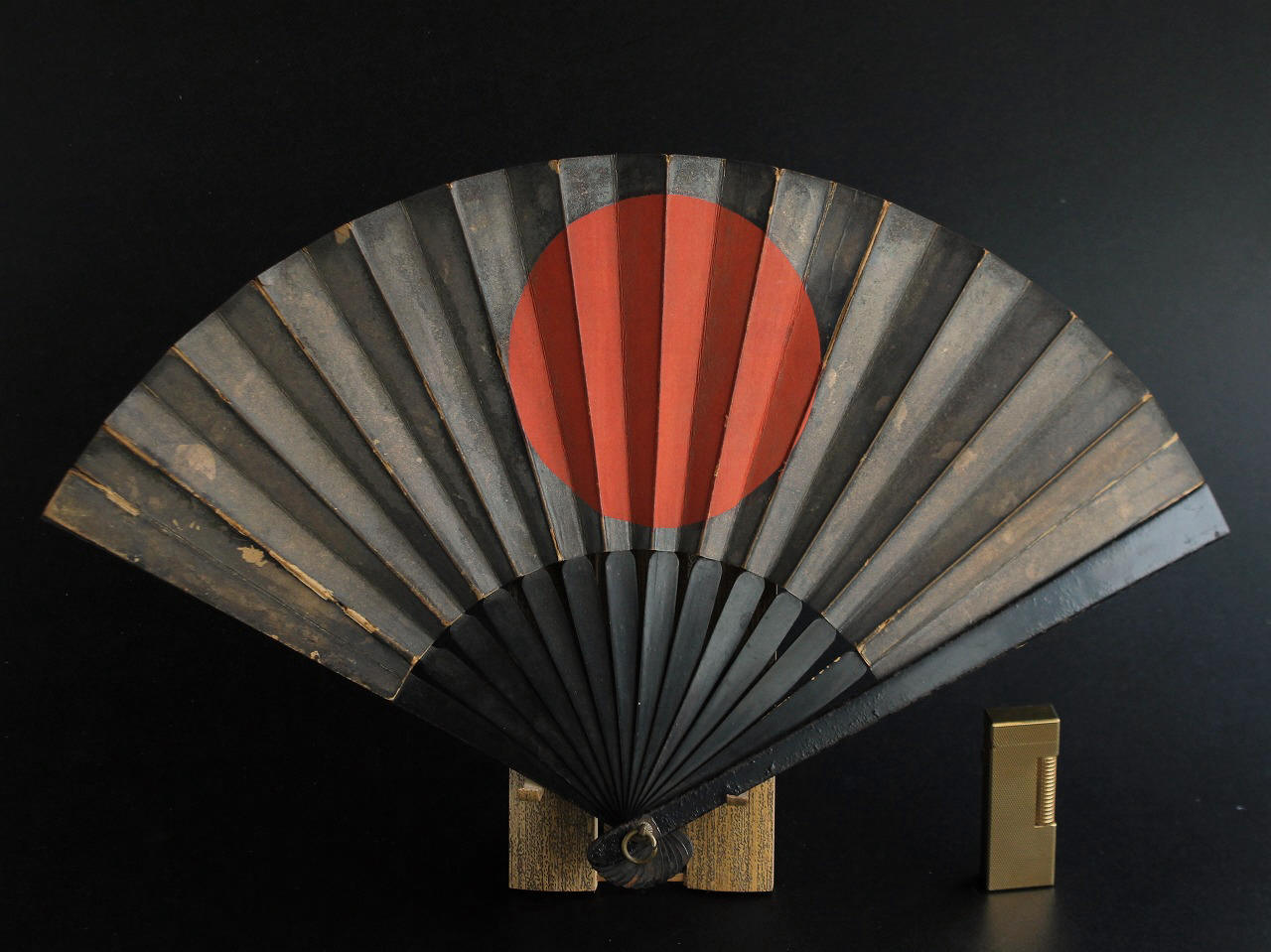
Antique Japanese TESSEN Iron Weapon gunsen war fan 1800s EDO period
The Japanese war fan, or tessen ( Japanese: 鉄扇,てっせん, romanized : tessen, lit. '"iron fan"'), is a weaponized Japanese hand fan designed for use in warfare. Several types of war fans were used by the samurai class of feudal Japan and each had a different look and purpose. [1] Description War fans varied in size, materials, shape, and use.

Antique Japanese War Fan, 1800s for sale at Pamono
The quintessential Japanese hand fans, uchiwa and. the uchiwa-shaped military fans made from leather or iron known as gunbai were used for signaling in war. From the Edo period (1603-1868.
War Fan (Gunbai) with Concealed Spear Blade Japanese The
This iron fan weapon, once wielded by skilled warriors, now serves as a symbol of the country's rich martial history and cultural heritage. By exploring the Tessen's origins, techniques, and impact, we gain a deeper understanding of Japan's unique traditions and the art of war. As you continue to delve into Japanese culture, may the spirit of.

5 Things You Should Know About Traditional Japanese Fans
Military commanders used a type of fixed fan, called a war fan (gunbai), to signal soldiers on the battlefield.The silver mounts of this example are engraved with flowers against a stippled background, and the lower section of the shaft, which is detachable, is mounted with a concealed steel blade—an unusual feature that would have appealed to Western collectors.

Tessen Jutsu Seminar Martial Art of the Japanese War Fan
A quick look at a type of fan used by some of the samurai, way back when.Note: Gunsen folding fans were also classified and used the same as Tessen iron fans.

Proantic Japanese War Fan In Paper And Metal End Edo
There were three types of Japanese war fans known as - gunsen, tessen and gumbi. All of them were produced to resemble harmless folding fans, and warriors could use them to cool themselves off, or as very dangerous weapons that were easy to smuggle. The tessen was a deadly weapon. Credit: The Man with the Iron Fists - Imdb
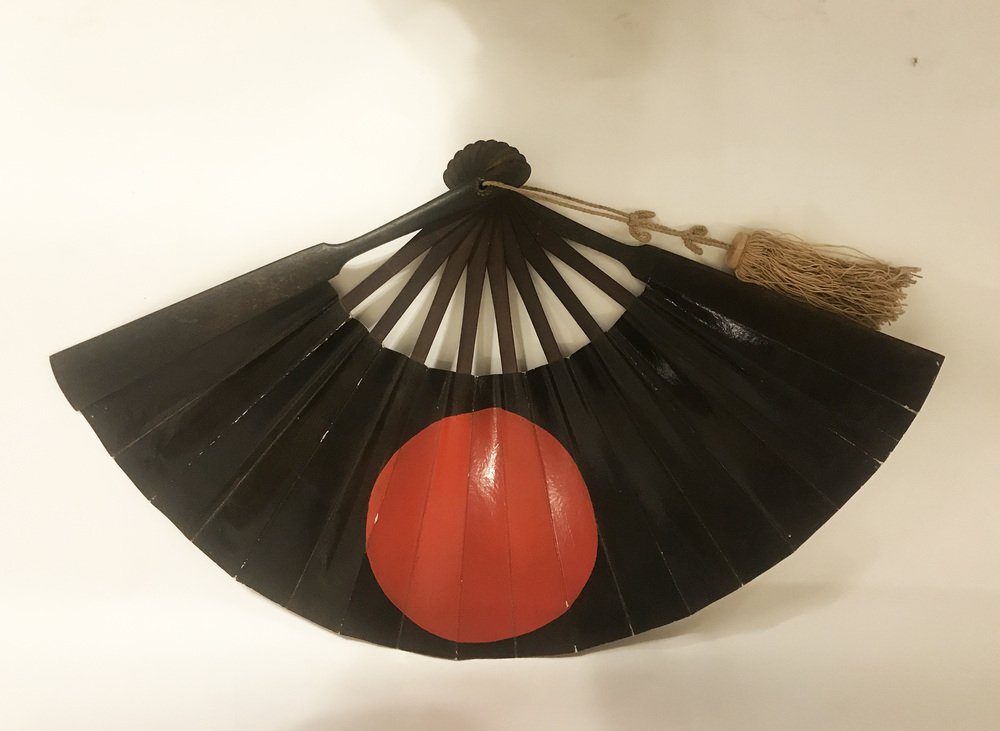
Antique Japanese War Fan, 1800s for sale at Pamono
Japanese war fans varied in materials, shape, and use. One important function of a war fan was signaling. Signalling war fans came in two types. One type was made like a real fan using wood or metal for ribs with lacquered paper attached to the ribs with a metal outer cover. The second type was a solid open fan made from metal and/or wood.
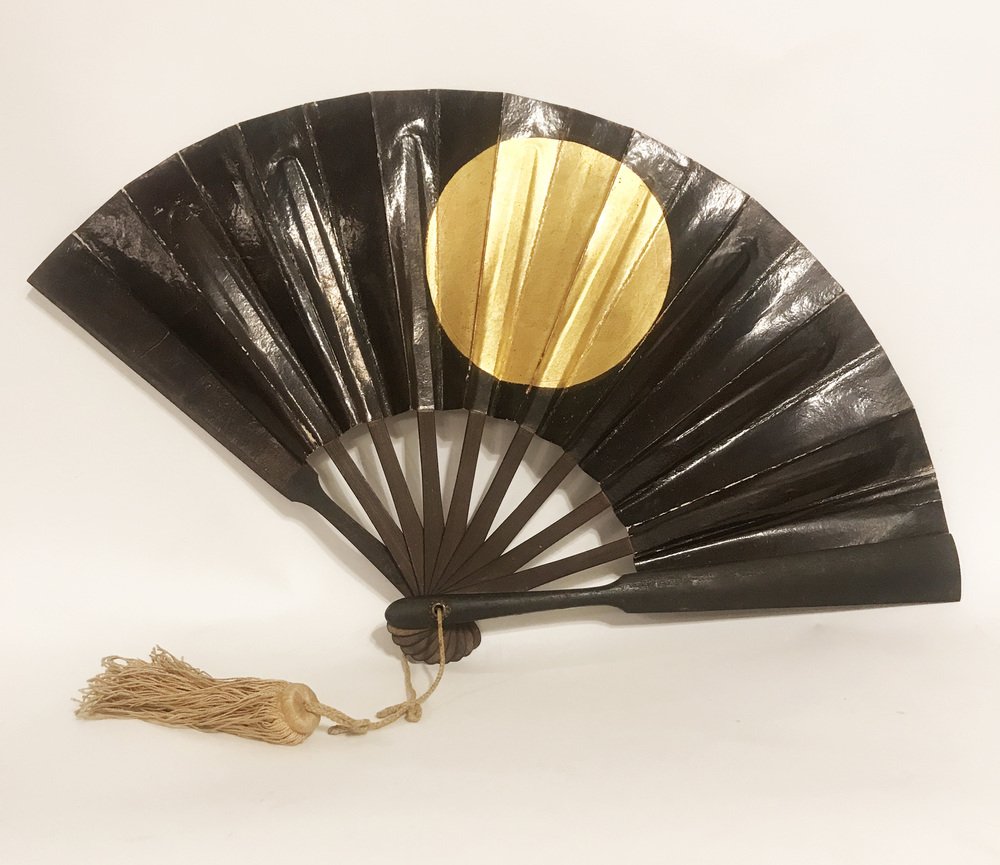
Antique Japanese War Fan, 1800s for sale at Pamono
1. History of Japanese Fans Women with Fans, 1870, The Met Museum The fan is one of few Japanese handicrafts originating in Japan, and not in China, during a period where most technological learning came from the Chinese mainland.

Japanese war fan (gunsen) made of iron, bamboo and lacquer depicting
Martial art fans are more typically found in the Chinese martial arts like Kung Fu and Wushu, but are also commonly used in some of the Japanese arts where they are known as Tessen. Martial arts assassins disguised as geisha commonly used steel fans to surprise their enemies with a deadly attack.

Japanese war fan Alchetron, The Free Social Encyclopedia
The Japanese fan is a traditional Japanese accessory that was first used by the high-social classes of people in the past such as aristocrats or samurais, and was used to highlight the social status of its owner. The first Japanese hand fans date back to the 6th century A.D. since at that time the tombs of the deceased were decorated with fans.

Japanese Samurai War Fan Tessen stainless steel feudal warlord Dragon
Tessenjutsu ( Japanese: 鉄扇術, lit. 'iron fan technique') is the martial art of the Japanese war fan (tessen). It is based on the use of the solid iron fan or the folding iron fan, which usually had eight or ten wood or iron ribs. The use of the war fan in combat is mentioned in early Japanese legends.

Antique Japanese War Fan, 1800s for sale at Pamono
Description Gunbai, from the Sino-Japanese roots meaning "military-apportioned [fan]", were a specialized form of fan used by samurai officers in Japan to communicate commands to their troops. Unlike regular fans, gunbai were solid, not folding, and usually made of wood, wood covered with metal, or solid metal. A sumo gyōji wielding a gunbai
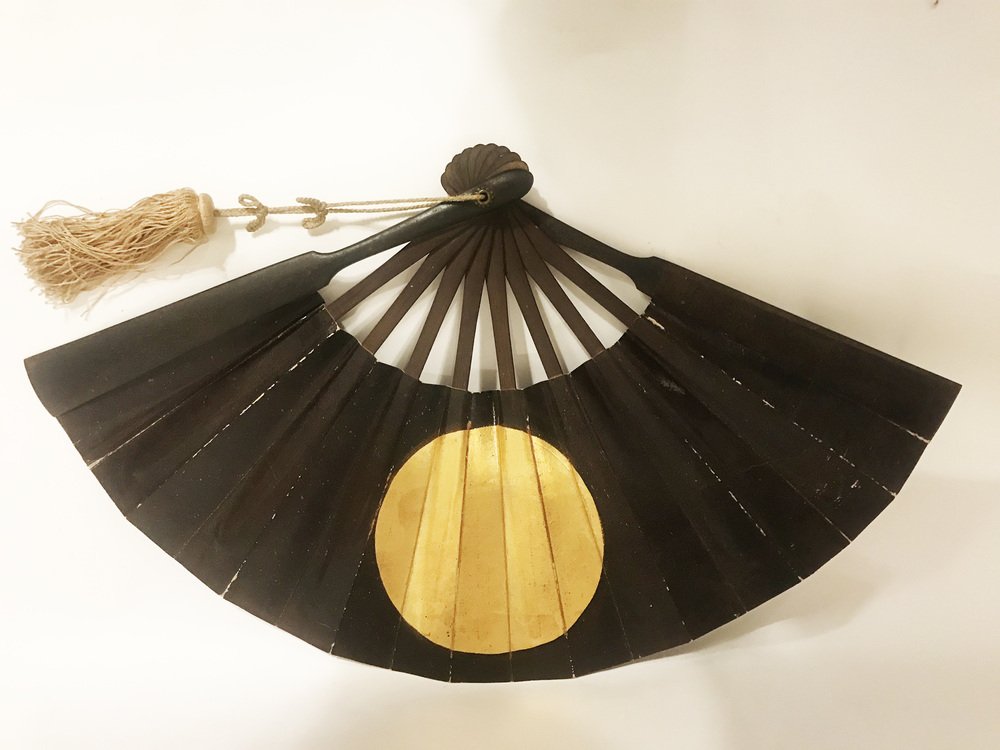
Antique Japanese War Fan, 1800s for sale at Pamono
Tessen Japanese war fan (Japanese: 鉄扇) Shuriken 手裏剣 (ninja star) Kunai 苦無 Kusarigama 鎖鎌 Nunchaku ヌンチャク Makibishi 撒菱 Sai 釵 Japanese Guns & Firearms
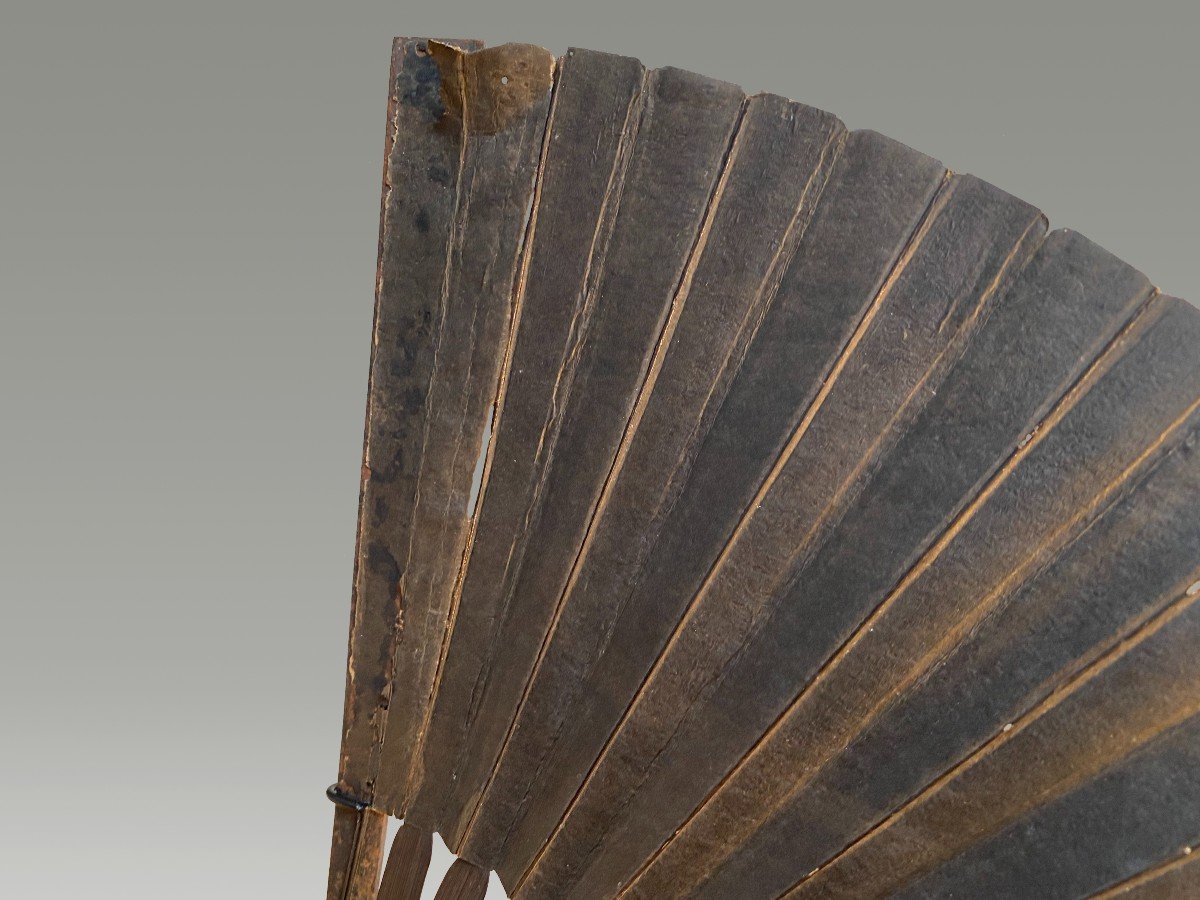
Proantic Japanese War Fan In Paper And Metal End Edo
1 Description 2 Types of Japanese war fans 3 War fans in history and folklore 4 War fans outside Japan 5 In popular culture 6 Gallery 7 See also 8 References 9 Sources Description War fans varied in size, materials, shape, and use. One of the most significant uses was as a signalling device. [1] Signalling fans came in two varieties:

Gunsen (folding war fan). Japanese war fan, War fan, Tessen fan
The Japanese war fan, or tessen (Japanese: 鉄扇,てっせん|tessen|translation="iron fan"), is a weaponized Japanese hand fan designed for use in warfare. Several types of war fans were used by the samurai class of feudal Japan and each had a different look and purpose.
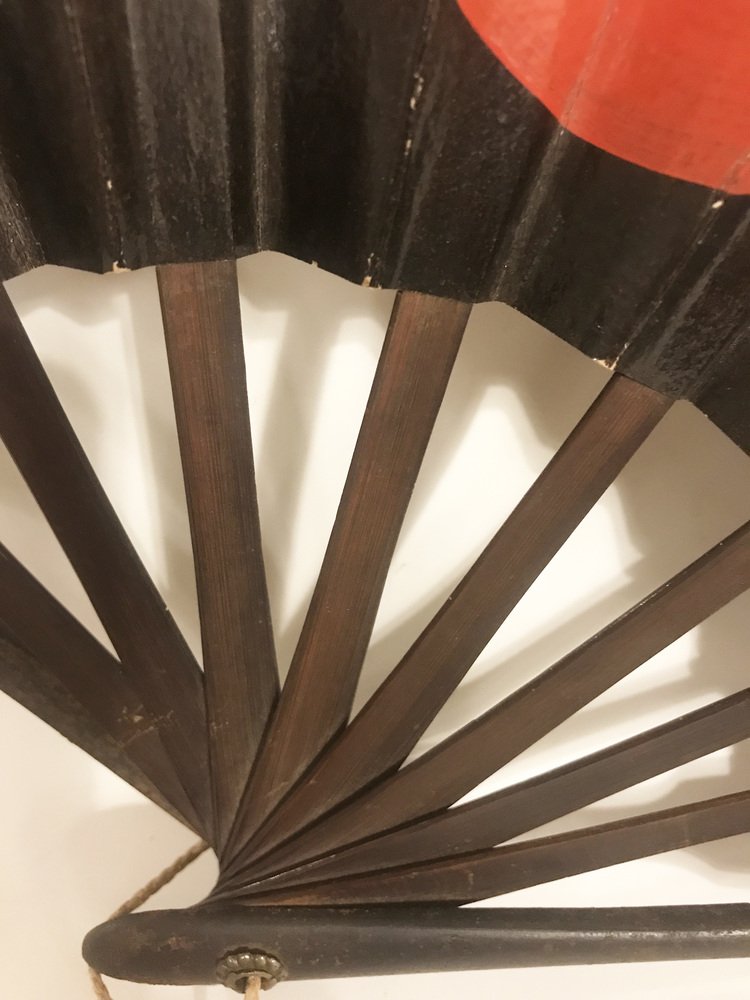
Antique Japanese War Fan, 1800s for sale at Pamono
1. Japanese fans come in three different styles Japanese fan styles The Japanese fans are categorized into three styles: fixed folding war Each fan has a unique construction design and application in Japanese culture. See next - Traditional Japanese Fans: 14 Stunning Fan Designs Fixed Fan